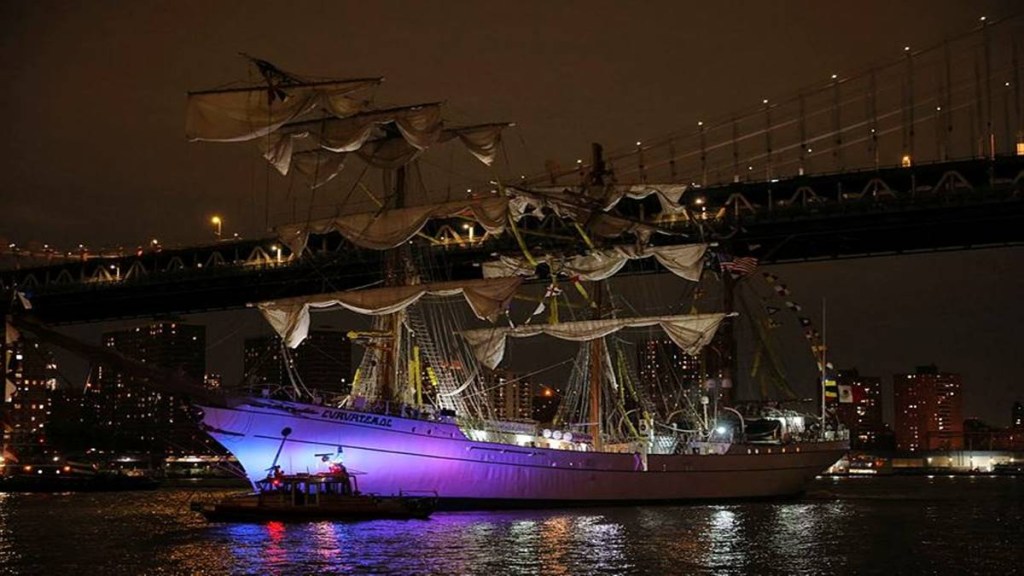A Mexican Navy training vessel, Cuauhtémoc, collided with the Brooklyn Bridge on the evening of Saturday, May 17, resulting in the tragic deaths of two sailors and injuries to 19 others. The incident occurred around 8:20 p.m. local time as the ship was departing from South Street Seaport, bound for Iceland as part of a goodwill tour. Initial investigations suggest that the ship experienced a sudden power failure while maneuvering out of the harbor. Without propulsion, Cuauhtémoc began drifting uncontrollably in reverse. Onlookers captured dramatic footage showing the tall ship hurtling backward at speed, its three towering masts striking the underside of the Brooklyn Bridge and snapping in succession like dominoes.
Why did It happen?
The loss of power was compounded by difficult environmental conditions. Strong currents, choppy waters, and winds of about 10 mph made the already narrow and busy New York Harbor particularly challenging to navigate. Maritime experts have pointed to questionable timing and tugboat support as contributing factors. Sal Mercogliano, a maritime historian and former merchant mariner, noted that a departure scheduled two hours earlier—when the tide was going out—would have been safer. Additionally, concerns have been raised about the tugboat Charles D. McAllister, which may have disengaged from the ship too soon, leaving Cuauhtémoc vulnerable. Among the deceased were América Yamilet Sánchez, a 20-year-old naval cadet from Veracruz, Mexico, who tragically fell from one of the masts during the crash, and sailor Adal Jair Marcos. The accident has deeply impacted both the Mexican Navy and the broader naval community.
Emergency response
Emergency crews from the FDNY, NYPD, and U.S. Coast Guard arrived promptly, securing the area with a 50-yard safety zone, treating the injured, and assessing structural damage. Fortunately, the Brooklyn Bridge sustained no major damage and was reopened to traffic following inspection.
Ongoing investigation
Authorities are still investigating the exact causes of the crash. The National Transportation Safety Board (NTSB), U.S. Coast Guard, and Mexican naval officials are all involved in the probe. Investigators are examining potential mechanical failures, crew readiness, and the tugboat’s actions during the incident. The 300-foot-long tall ship, launched in 1982, is on a global goodwill tour visiting 22 ports across 15 countries. Its mission is to promote international diplomacy and provide training to naval cadets. The NTSB, U.S. Coast Guard, and Mexican Navy are jointly conducting a thorough investigation. The damaged vessel is currently docked at Pier 35 in Manhattan. Investigations are ongoing, and safety recommendations are expected to be issued in the coming months. The crash may lead to stricter harbor navigation protocols—especially for large or tall ships operating in crowded urban waterways.

